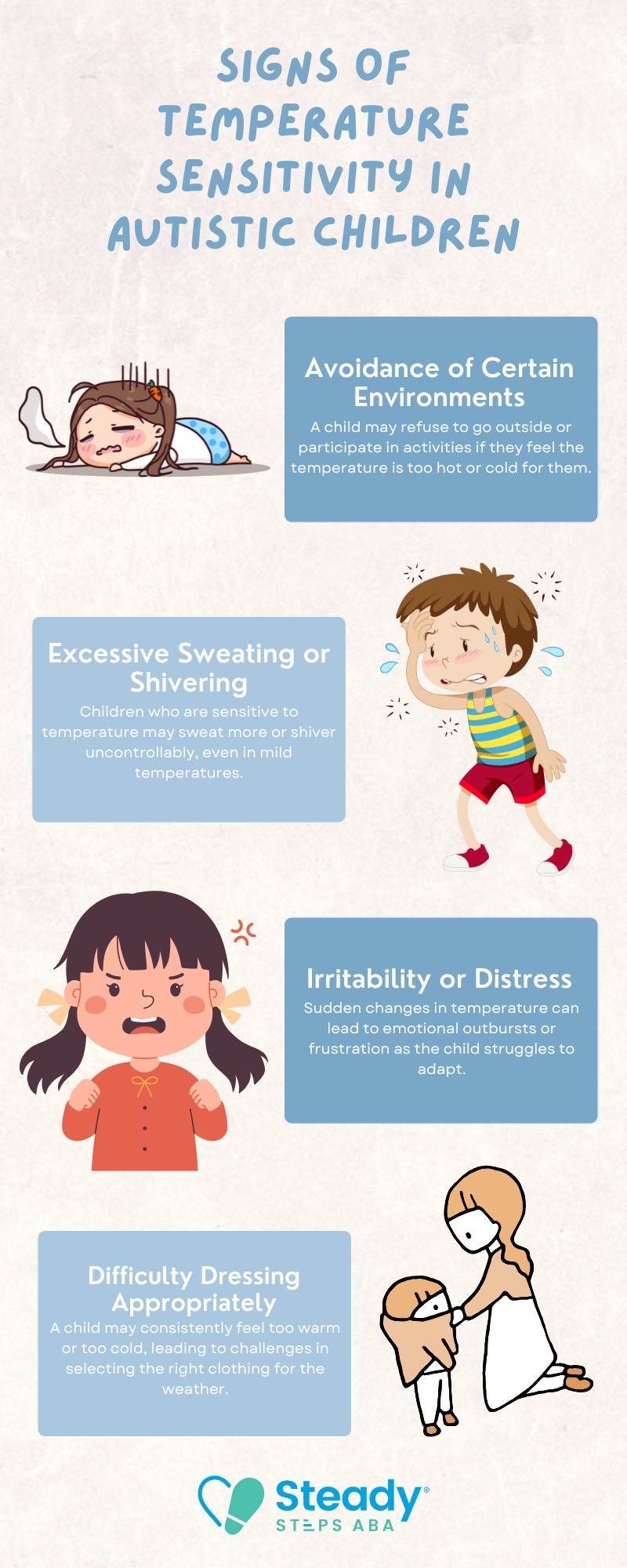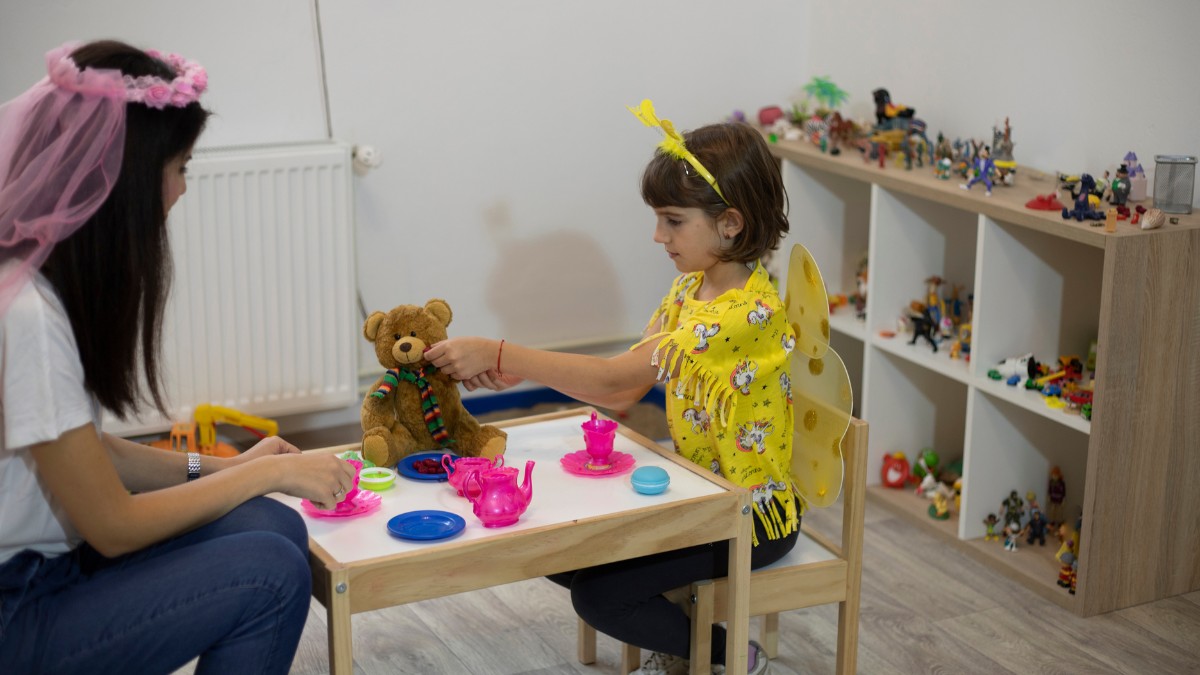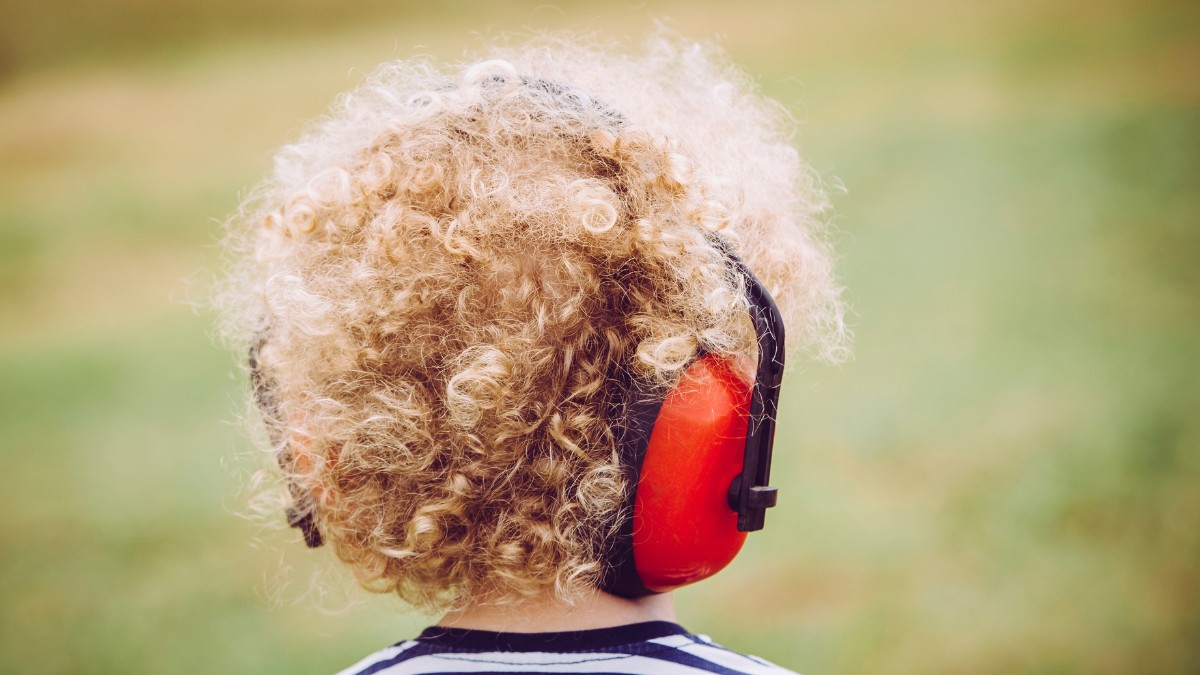Key Points:
- Many children with autism experience sensitivity to temperature changes, either becoming overwhelmed by extreme cold or hot environments.
- Temperature sensitivity can impact daily functioning, including behavior and mood, and may lead to meltdowns or withdrawal.
- Understanding and managing temperature sensitivities are crucial for supporting children with autism in their daily routines.
For children with autism, managing their environment can be a constant challenge. One of the less-discussed but significant aspects of their sensory experience is sensitivity to temperature. This heightened or diminished response to temperature changes—whether hot, cold, or fluctuating—can create challenges in everyday situations.
It’s not uncommon for children with autism to react more intensely to temperature changes than other children, either becoming very distressed in warm or cold environments or, conversely, seeking out these extremes.
This sensitivity to temperature is a part of the sensory processing challenges faced by many individuals with autism. It can manifest in various ways, such as avoiding warm or cold spaces, wearing inappropriate clothing for the weather, or becoming physically uncomfortable when exposed to certain temperatures.
These reactions can affect not only their ability to focus and engage in daily activities but also their emotional well-being. Understanding the causes of temperature sensitivity and how to manage it is essential for parents and caregivers seeking to improve their child’s quality of life.
Why Do Children with Autism Have Temperature Sensitivity?
Temperature sensitivity in children with autism often stems from differences in how their sensory systems process information. The brain’s ability to filter and respond to sensory stimuli is often atypical in children on the autism spectrum, meaning they might perceive certain sensory inputs, like temperature, more intensely than others.
Some children may be hypersensitive to temperature, where even a slight change in the environment may feel overwhelming. For example, a slight draft or being too warm could lead to frustration, discomfort, or meltdowns. Conversely, other children may be hyposensitive to temperature, seeking out extreme cold or warmth to stimulate their sensory systems and regulate their bodies.
Understanding the underlying cause of a child’s temperature sensitivity is essential. It can help parents and caregivers develop strategies that prevent distress or improve coping skills during temperature-related challenges.
How Does Sensitivity to Temperature Affect Children with Autism
Temperature sensitivity can impact various aspects of life for children with autism, including their behavior, ability to focus, and emotional state. For example, children who are hypersensitive to temperature may become easily upset or agitated when exposed to heat or cold.
This may be especially challenging in environments where temperature fluctuations are hard to control, such as in school or social settings. In extreme cases, the child may avoid certain environments altogether, which can hinder social and academic opportunities.
On the other hand, children who are hyposensitive may seek out excessive warmth or cold, such as insisting on wearing heavy clothing during hot weather or seeking out cold environments when it’s chilly outside. This can lead to dangerous situations if not carefully monitored, as it could result in heat exhaustion or frostbite.
Here are some key signs of temperature sensitivity in autistic children:

The Importance of Monitoring Temperature Sensitivity in Children
Temperature sensitivity is something that can easily be overlooked in children, especially when they don’t have the words to express how they feel. However, for many children, including those with autism or sensory processing disorders, extreme temperatures—whether too hot or too cold—can be overwhelming or even painful.
Being aware of temperature sensitivity can also help caregivers create more inclusive environments, whether at home, school, or public spaces. Understanding when a child feels too warm or too cold can lead to better management of their comfort and can reduce stress or sensory overload. By proactively observing their responses, you can ensure they’re not just physically comfortable but also emotionally and mentally at ease.
Managing Temperature Sensitivity in Children with Autism
Managing sensitivity to temperature in children with autism requires a combination of understanding, strategies, and practical adjustments to their daily routines. It’s essential for parents and caregivers to observe their child’s reactions to temperature changes and find ways to make them more comfortable.
Here are some practical strategies for managing temperature sensitivity:
1.Adjusting the Environment
- Temperature Control – Ensure that the child’s home, school, and other environments are kept at a consistent, comfortable temperature. Air conditioning or space heaters can be used to adjust indoor temperatures.
- Clothing Choices – Pay attention to the clothing the child wears, ensuring that it is appropriate for the weather. Layering clothes may help, as it allows the child to adjust their comfort level by adding or removing layers.
- Outdoor Activities –Before engaging in outdoor activities, check the weather forecast and dress the child accordingly. In cold weather, ensure they are wearing appropriate gear like hats, gloves, and warm coats. In hot weather, lightweight clothing and sunscreen are essential—especially if you’re planning sensory-friendly activities like water play. Discover how water play can help soothe and engage children on the spectrum in our article, “Why Water Play Calms and Engages Kids with Autism.”
2. Gradual Exposure to Temperature Changes
- Controlled Sensory Exposure – If your child is hypersensitive to temperature, consider introducing them to temperature changes gradually. For example, you could start with short periods in a warmer or colder space and gradually increase the exposure time as they become more accustomed to the change.
- Reward Systems – Rewarding your child for tolerating temperature changes, such as staying outside for a set period, can help them learn to cope with uncomfortable situations. Use praise, stickers, or small rewards to encourage positive behavior.
3. Creating Sensory Breaks
- Cool Down or Warm Up – Provide breaks during activities to either cool down or warm up the child. For example, offer a cold drink or access to a cool environment during physical play, or provide a warm blanket and cozy spot when the child is feeling cold or overstimulated.
- Sensory Tools – Consider using sensory-friendly items like cooling towels, weighted blankets, or soft fabrics to help the child self-regulate their body temperature and sensory needs.
4. Collaboration with Therapists
- Occupational Therapy (OT) – Occupational therapists can help develop individualized strategies to manage temperature sensitivities. They may recommend activities or tools to help the child cope with discomfort or find ways to build tolerance to temperature fluctuations.
- Behavioral Therapy – ABA therapy can be instrumental in supporting children with autism in understanding and managing their sensory sensitivities. ABA therapists can use strategies to help children adapt their behavior in response to temperature-related discomfort.
5. Monitoring and Feedback
- Continuous Observation – Keep an eye on the child’s responses to different temperatures throughout the day. If you notice patterns or triggers, adjust the environment or strategies accordingly.
- Communication and Feedback – For children who can communicate, ask them how they feel about the temperature and what makes them comfortable. For non-verbal children, look for cues such as body language or facial expressions to gauge their discomfort.
By taking a thoughtful, proactive approach, parents and caregivers can help children with autism navigate temperature changes more effectively, leading to improved comfort and overall well-being.
Help Your Child Thrive with ABA Therapy Today
If your child struggles with sensitivity to temperature, working with professionals can provide valuable support. Steady Steps ABA offers ABA therapy in Maryland to help children with autism manage sensory sensitivities and develop coping skills.
ABA therapy can help your child learn to recognize and respond to temperature changes in a healthy, regulated way. Through individualized therapy plans, our ABA therapists focus on building your child’s tolerance to various sensory experiences, including temperature fluctuations, in a structured and supportive environment.
Whether it’s reducing discomfort in specific settings or developing positive behaviors for dealing with temperature changes, get in touch with us today to learn how ABA can be a helpful tool for both autistic children and their families!






